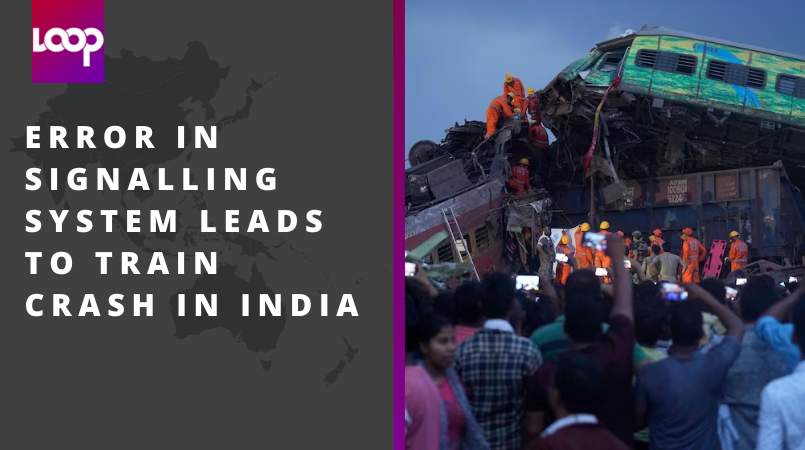
The derailment in eastern India that killed 275 people and injured hundreds was caused by an error in the electronic signalling system that led a train to wrongly change tracks and crash into a freight train, officials said on Sunday.
Key points:
- An official said the passenger train clashed with a freight loaded with iron ore due to signalling error
- The collision flipped the passenger train's coaches onto another track, causing the derailing of another passenger train
- Officials say detailed investigation will reveal whether the error was human or technical
Authorities worked to clear the mangled wreckage of the two passenger trains that derailed Friday night in Balasore district in Odisha state in one of the country's deadliest rail disasters in decades.
An Odisha government statement revised the death toll to 275 after a top state officer put the number at over 300 on Sunday morning.
The officer spoke on condition of anonymity as he was not authorised to speak to reporters.
Jaya Verma Sinha, a senior railway official, said the preliminary investigations revealed that a signal was given to the high-speed Coromandel Express to run on the main track line, but the signal later changed, and the train instead entered an adjacent loop line where it rammed into a freight loaded with iron ore.
The collision flipped Coromandel Express's coaches onto another track, causing the incoming Yesvantpur-Howrah Express from the opposite side also to derail, she said.
The passenger trains, carrying 2,296 people, were not speeding, she said.
Trains that carry goods are often parked on an adjacent loop line so the main line is clear for a passing train.
Ms Verma said the root cause of the crash was related to an error in the electronic signalling system.
She said a detailed investigation will reveal whether the error was human or technical.
The electronic interlocking system is a safety mechanism designed to prevent conflicting movements between trains.
It also monitors the status of signals that tell drivers how close they are to a next train, how fast they can go and the presence of stationary trains on the track.
"The system is 99.9 per cent error free. But 0.1 per cent chances are always there for an error," Ms Verma said.
To a question whether the crash could be a case of sabotage, she said "nothing is ruled out".
Victims recall the deadly incident
On Sunday, a few shattered carriages, mangled and overturned, were the only remnants of the tragedy.
Railway workers toiled under the sun's glare to lay down blocks of cement to fix the broken tracks.
A crew with excavators was removing mud and debris to clear the crash site.
Meanwhile, many desperate relatives were struggling to identify the bodies of their loved ones because of the gruesomeness of the injuries.
Few others were searching hospitals to check whether their relatives were alive.
Bulti Khatun roamed outside a nearby hospital in a dazed state, holding an identity card of her husband who was onboard the Coromandel Express and traveling to southern Chennai city.
Ms Khatun said she visited the morgue and other hospitals to look for him, but was unable to find him.
"I am so helpless," she said, sobbing.
AP
Story published on ABC News
